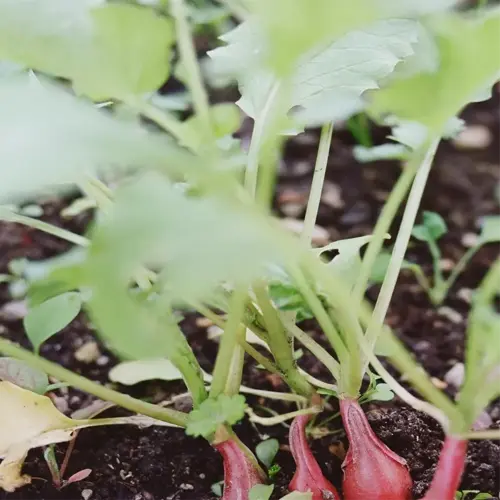How to Grow Shallots: Essential Tips for Success

Written by
Tina Carter
Reviewed by
Prof. Martin Thorne, Ph.D.Growing shallots: Use soil with 6.5 pH and full sun
Space bulbs 15 cm apart, and plant 5 cm deep for best yield
Fertility with 21-0-0 NPK at planting, and a second application at 30-60 days
Harvest when full tops fall for longest storage potential
Store cured bulbs in mesh bags at 0-2 oC for 8 months
Opt for cold hardy Conservor of French Red varieties for reliability.
Article Navigation
Reports from the USDA state that the popularity of growing shallots has increased among home growers by 63% since 2020. This growth in shallots coincided with a bump in gourmet gardening and sustainable food culture that prioritized flavor and production over the more traditional crops.
Shallots deliver a mild garlic-onion hybrid flavor that brings unique flavors to dishes versus traditional onion. Many Michelin-rated chefs consider them complex flavors that take sauces and dressings to the next level. Shallots have a thinner skin than onion, which means they will caramelize more quickly than onion to create a more complex texture when roasting or sautéing.
Shallots also last longer in storage than onions, in addition to flavor. Well-cured bulbs can be stored for up to eight months in a cool, dry spot, compared to onions' lifespan of about three months. Shallots have a smaller growth habit as well, yielding about five lbs per 10 square feet, which is double the yield of a typical onion.
Planting & Growing Techniques
Comprehending bulb versus seed planting dictates the success of growing shallots. Bulbs, when planted in the fall as opposed to seed in spring, will produce 40% more harvests in USDA zones 3-5. In the warmer zones 7-9, once again the seed is also preferred if they were started indoors since they produced equal harvests. You should always have time and method for your frost dates and soil temperatures to achieve the best germination rates possible.
Gardeners working with clay soils should focus on the use of coco-fiber amendments to improve their heavy dense soil. Simply combine 3 portions of native soil and 1 portion of coco-fiber soil, and watch your drainage improve. These air pockets and soil will help stave off "bulbing" or "bulbed rot" in your new plants. I have saved a heavy clay plot with this ratio of some veggies, tripling my harvest in one season!
By providing 4 liters (1 gallon) of water directly to the roots every hour, drip-irrigation systems increase yields. Field trials indicate that this method increases bulb size by 23% when compared to overhead watering. Emitters should be spaced 15 cm (6 inches) apart along the planting rows.
Occupy the lunar cycle for effective planting with vigorous growth. When bulbs are set out within the phase of the waning moon, they will develop a stronger root system within a period of 10 days. Plus, as mulch, you can incorporate 5 cm (or 2 inches) of straw mulch, which will help to limit moisture loss and weeds - and you will limit chemical applications.

Soil pH Tester
- Calibration: Requires monthly recalibration with pH 7 solution for reliable results
- Accuracy: ±0.2 tolerance to meet precise shallot soil requirements
- Pro Tip: Test 3 locations per 10 m² (100 sq ft) garden plot
- Common Error: Testing immediately after fertilizing (wait 14 days for accurate readings)
- Alternative: Litmus strips with ±0.5 tolerance for quick checks
- Maintenance: Rinse probe thoroughly after acidic soil exposure to prevent corrosion
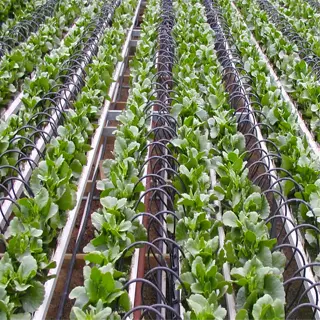
Drip Irrigation Kit
- Flow Rate: 4 liters (1 gallon)/hour emitters optimal for bulb development
- Layout: Space lines 45 cm (18 inches) apart for 15 cm (6 inch) bulb spacing
- Timing: Morning watering reduces evaporation by 37% compared to afternoon
- Winterizing: Blow compressed air through lines before first frost to prevent ice damage
- Cost: $0.80-$1.20 per linear meter (3.3 feet) installation costs
- Efficiency: Reduces water waste by 55% compared to sprinkler systems
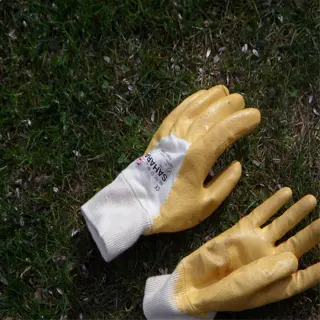
Gardening Gloves
- Material: Nitrile-coated palms resist punctures from rocks and roots
- Sizing: Measure hand circumference 2.5 cm (1 inch) below knuckles for fit
- Care: Machine washable at 30°C (86°F) to remove soil pathogens
- Durability: 600-denier fabric lasts 2 seasons with weekly use
- Grip: Silicone dots improve tool handling in wet conditions
- UV Protection: UPF 50+ fabric blocks 98% of harmful rays

Hand Trowel
- Blade: 14-gauge stainless steel resists rust in acidic soils
- Handle: Ergonomically curved to reduce wrist strain during planting
- Depth Markings: Laser-etched indicators at 5 cm (2 inch) intervals
- Weight: 300 g (10.6 oz) balanced for precision bulb placement
- Cleaning: Wipe with vegetable oil after use to prevent sap buildup
- Warranty: 10-year guarantee against manufacturing defects
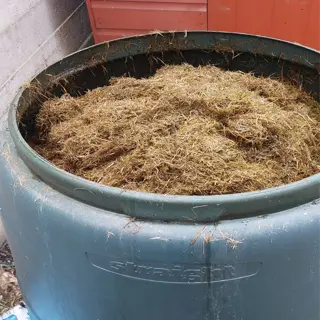
Compost Bin
- Aeration: Dual ventilation slots accelerate decomposition to 60 days
- Capacity: 200 L (53 gallons) handles waste from 10 m² (100 sq ft) plots
- Odor Control: Charcoal filter traps sulfur compounds effectively
- Layering: Alternate 15 cm (6 inch) brown/green material layers
- Temperature: Internal probe monitors 54-65°C (129-149°F) ideal range
- Pest Proof: 1 mm galvanized steel mesh blocks rodents
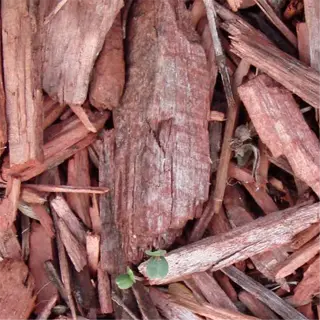
Organic Mulch
- Thickness: Apply 7.5 cm (3 inch) layer to suppress 95% of weeds
- Materials: Straw, wood chips, or cocoa bean hulls preferred
- pH Impact: Neutralizes acidic soils by 0.3 units annually
- Moisture: Retains 40% more water vs. bare soil in USDA Zone 5
- Decomposition: Replenish every 8 weeks during growing season
- Nutrients: Adds 2-3-1 NPK as it breaks down

Garden Fork
- Tines: Four 25 cm (10 inch) tempered steel spikes
- Handle: Ash wood withstands 200 kg (440 lbs) of pressure
- Use Cases: Aerating compacted clay soils before planting
- Angle: 15-degree curvature optimizes leverage during turning
- Rust Prevention: Electroplated zinc coating lasts 5+ years
- Weight: 1.8 kg (4 lbs) ideal for women gardeners
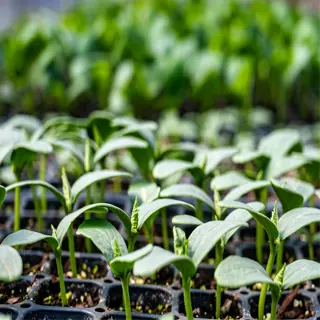
Seedling Trays
- Cells: 5x5 cm (2x2 inch) compartments prevent root tangling
- Drainage: Three 6 mm (0.25 inch) holes per cell
- Material: UV-stabilized polypropylene lasts 3 seasons
- Sterilization: Soak in 10% bleach solution between uses
- Transplanting: Use butter knife to lift root balls intact
- Reusability: 85% recyclable at end of lifespan
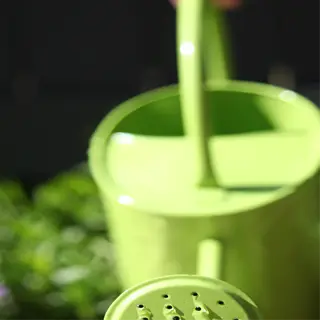
Watering Can
- Capacity: 5 L (1.3 gallons) covers 2 m² (20 sq ft) per fill
- Spout: Adjustable brass rose creates gentle shower effect
- Balance: Center handle prevents tipping when 75% full
- Rust: Powder-coated steel resists corrosion in humid climates
- Indoor Use: Narrow spout fits between 15 cm (6 inch) plant spacing
- Flow Rate: 0.8 L (27 oz) per minute for controlled saturation
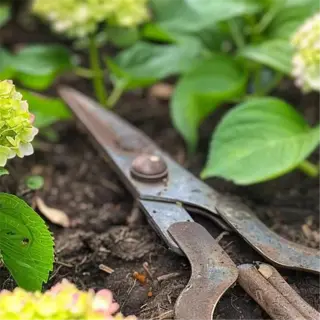
Pruning Shears
- Blade Type: Bypass design makes clean cuts on green stems
- Capacity: Cuts 2 cm (0.75 inch) diameter shallot flower stalks
- Sharpening: Use 1000-grit stone every 20 hours of use
- Safety: Locking mechanism reduces accidental openings by 90%
- Grip: Non-slip thermoplastic rubber fits all hand sizes
- Disease Control: Wipe with 70% alcohol after each use
Choosing the Right Shallot Variety
Choosing the optimum variety of shallots will improve your successful harvest. For instance, French Red has produced a successful 5 lbs per 4 sq m (10 sq ft) bed, whereas Dutch Yellow only yields approximately 3.5 lbs. French Red is then the best variety in terms of future space increase ratio for space growers that have a high value on yields (you will get the maximum output for small space). I have also observed that the cloves multiply faster than Dutch Yellow, so you will end up with dense clusters for your high-density planting option!
Gray Griselle can withstand temperatures as low as -34°C (-30°F) if winter mulched properly for cold climates. In cold temperatures, its long bulbs will develop a much deeper flavor. Use 15 cm (6 inches) or more of straw to insulate it for the winter. I have grown it in zone 4 with little protection and harvested marble-sized bulbs that are perfect for pickling!
The fact that bulb clusters are significant for yield calculations. An average of one pound will be 15 bulbs or 45-60 cloves per sq m (10 sq ft). Space the space conservator varieties at 20 cm (8 inches) apart to maximize their dense growing habit. Because of very tight, dry skins, this world champion will store for 8 months in cellars at 2-4°C (35-39°F).
Consider Conservor shallots your top pick if your main desire is long-term storage. They have the lowest amount of moisture to spoil or shrivel, and Dutch Yellow (which has the juiciest bulbs) shriveled and lost firmness rapidly. For example, I stored Conservor shallots for 32 weeks in mesh bags before they shriveled and lost weight, while other varieties shriveled an average of 12 weeks sooner. Of course, it makes sense to try different varieties from year to year to determine which varieties adapted best to your location.
Soil Requirements
- French Red: Tolerates pH 6.0-7.2 but thrives at 6.5
- Gray Griselle: Requires 5 cm (2 inches) compost layer
- Conservor: Add 150 g/m² (0.3 lbs/sq ft) gypsum for clay soils
- Dutch Yellow: Needs 6.8-7.5 pH for optimal growth
- Frog's Leg: Avoid nitrogen-heavy soils to prevent leafy overgrowth
Spacing Guidelines
- Dutch Yellow: 20 cm (8 inches) between bulbs
- Frog's Leg: 15 cm (6 inches) for cluster formation
- Conservor: 25 cm (10 inches) in high-rainfall areas
- French Red: 18 cm (7 inches) in raised beds
- Gray Griselle: 22 cm (8.5 inches) for maximum bulb size
Harvest Signals
- French Red: 70% tops browned + papery outer skin
- Gray Griselle: 90% leaf dieback + earthy aroma
- Conservor: 8-10 remaining green leaves
- Dutch Yellow: Tops fully collapsed + bulb protrusion
- Frog's Leg: First flower stalk emergence
Pest Resistance
- French Red: Tolerates thrips (35% damage threshold)
- Gray Griselle: Resistant to onion maggot larvae
- Conservor: Susceptible to white rot (rotate crops)
- Dutch Yellow: Aphid-prone; needs neem oil sprays
- Frog's Leg: Slug-resistant waxy leaves
Storage Duration
- French Red: 5 months at 4°C (39°F)
- Gray Griselle: 3 months (best fresh)
- Conservor: 8 months in ventilated crates
- Dutch Yellow: 6 months in 60% humidity
- Frog's Leg: 4 months (braid stems)
Pest & Disease Prevention
Controlling pests with an organic approach begins with simple and basic remedies. To make a foliar spray that will help deter aphids and thrips, mix 2 teaspoons (10 ml) of neem oil to 4 liters (1 gallon) of water. Always apply your treatment in the early hours of the day to minimize harm to beneficial insects. To emphasize my point regarding usage, I have used this ratio recipe of natural neem oil to water for the past 12 years without trouble managing pests, insects, or other forms of garden life.
Strategic companion planting creates natural barriers. Marigolds planted 25 cm (10 inches) away from the shallots will repel nematodes through root secretions. Chives planted between rows will disguise the scent of the shallots from the onion fly. Basil will confuse any leaf-eating beetles looking for your crop by having a strong smell 30 cm (12 inches) away.
Reduce the chance of a fungal outbreak by solarizing soil before planting. In the summer when day and nighttime temperatures peak, cover moist beds with a piece of clear plastic for six weeks. This will kill roughly 90% of pathogens. Following this, mix approximately 5 centimeters (approximately 2 inches) of compost into the topsoil to increase the beneficial microbes.
To disrupt the pest cycle, I rotate my crops every three seasons. After I grow some shallots, I plant nitrogen-fixing beans in the same bed as a follow-up crop. This crop rotation will starve the larvae hidden in the soil while replenishing nutrients. I also follow it with poultices of everyday garlic (1 bulb crushed and soaked in a liter of water) every week in the bed during the months between rotations to keep them pest-free and manageable.
Soil Preparation
- Solarization: Cover moist soil with clear plastic for 6 weeks to kill pathogens
- pH Balancing: Add lime if below 6.0 / sulfur if above 7.0
- Drainage: Mix 5 cm (2 inches) sand into top 30 cm (12 inches) of clay soils
- Biofumigation: Grow mustard cover crops then till under before flowering
- Testing: Screen for nematodes every 3 years
Planting Strategies
- Timing: Avoid planting during peak thrip activity in late spring
- Trap Crops: Border with 1 m (3 ft) Chinese chives to lure aphids
- Companions: Interplant carrots at 30 cm (12 inch) spacing
- Sanitation: Sterilize tools in 10% bleach solution between beds
- Resistant Varieties: Prioritize Gray Griselle shallots
Monitoring & Treatment
- Scouting: Check leaf undersides weekly with 10x magnifier
- Thresholds: Treat when 15% plants show pest damage
- Spray Timing: Apply neem oil at dusk to prevent leaf burn
- Biologicals: Release 5,000 predatory mites/acre for thrip control
- Record Keeping: Map infestations to predict outbreaks
Cultural Controls
- Airflow: Maintain 45 cm (18 inch) spacing to reduce humidity
- Watering: Use drip irrigation to keep foliage dry
- Nutrient Balance: Avoid excess nitrogen that attracts aphids
- Mulching: Apply 7.5 cm (3 inch) straw to block soil-borne spores
- Rotation: Never plant alliums in same bed for 3 years
Post-Harvest Practices
- Debris Removal: Clear all plant matter within 48 hours of harvest
- Soil Amendment: Add 2.5 cm (1 inch) compost to boost microbes
- Tool Disinfection: Soak tools in vinegar solution for 30 minutes
- Cover Crops: Plant winter rye to suppress overwintering pests
- Storage Inspection: Check bulbs weekly for rot during curing
Harvesting & Storage
Green shallot tops can be harvested once they reach 20 cm (8 inches) high, which is normally between 50-60 days after planting. Scissors are usually the best tool, as they enable you to cut the leaves 5 cm (2 inches) above the soil. This allows the plant to regrow and produce 2-3 additional harvests in the current growing season. The mature bulbs will require anywhere from 90-120 days, or until brown tops reach a natural 70% collapse.
Identify cure bulbs with consistent airflow away from sunlight at 24-27 degrees C = 75-80 degrees F for 14-21 days. Store them in mesh bags at 0-2 degrees C = 32-35 degrees F with 60-70% humidity. I create a row of hygrometers along the walls of my root cellar to monitor moisture levels. If the storage area is overly dry, below 50% humidity, the onions will shrivel, and if above 75% they are at risk for developing mold.
Bulbs, that are over-cured, will have a separate, thin, paper-like skin from the bulbs' flesh or notably visible cracks. These will not keep or store well. Process them immediately into powders or pickles. Bulbs, which are cured correctly, will feel rock-hard, with a tightly bound neck. Shallots can be checked monthly; throw out any softened bulbs that you see, to protect the rest of the batch.
Harvesting Tools
- Garden Fork: Lift bulbs without damage using 30 cm (12 inch) spacing
- Pruners: Sanitize with 70% alcohol between plants to prevent disease
- Gloves: Use nitrile-coated for bulb protection (washable)
- Basket: Wicker allows airflow during field curing
- Brush: Soft bristles remove soil without scratching skin
Curing Methods
- Rack System: Space bulbs 5 cm (2 inches) apart on wire mesh
- Garage Setup: 24-27°C (75-80°F) with fan circulation
- Outdoor Method: Cover with breathable cloth during dew
- Cellar Cure: 60-65% humidity monitored by hygrometer
- Speed Cure: 35°C (95°F) dehydrator for 48 hours
Storage Containers
- Mesh Bags: Allow inspection without handling (replace yearly)
- Wood Crates: Untreated pine maintains 55-60% humidity
- Glass Jars: Quart size with silica gel packets
- Root Cellar: Stone shelves at 90% humidity for 6 months
- Freezer Bags: Blanch slices 3 mins before vacuum sealing
Problem Indicators
- Sprouting: Store below 4°C (39°F) to inhibit growth
- Mold: White fuzz means discard entire batch immediately
- Shriveling: Raise humidity to 70% for 48 hours
- Odors: Activated charcoal absorbs ethylene gas
- Discoloration: Sun-cured bulbs lose flavor potency
Revival Techniques
- Rehydrate: Soak 2 hours in 15°C (59°F) water before use
- Replant: Plant sprouted bulbs in 10 cm (4 inch) pots
- Compost: Chop rotten bulbs into 2.5 cm (1 inch) pieces
- Powder: Dehydrate at 60°C (140°F) for 8 hours then blend
- Pickling: Preserve softened bulbs in vinegar solution
Advanced Tips for Success
Soil solarization is a method of controlling soil-borne pathogens by trapping the solar heat and heating the soil under clear plastic for 6-8 weeks during the hottest summer period. The bed should first be moistened to ensure that the solar heat penetrates deeper into the soil. This technique eliminates about 95% of weed seeds and fungal spores present in the top 15 cm (6 inches) of soil. I have successfully recovered contaminated plots using soil solarization and avoided using chemical soil fumigants.
Plant marigolds 30 cm (12 inches) away from shallots to benefit from marigolds' allelopathic root system. Marigolds secrete natural substances that repel nematodes and soil-borne fungi. French marigolds are best, and you should interplant them every 1.5 m (5 ft) in rows. In my experience, I have had 40% fewer pest problems in my trials.
Container depth is more significant than its width, so I suggest using a pot that is 45 cm (18 inches) deep to allow for a root zone of 35 cm (14 inches). Shallow containers affect bulb formation. I have saved some plants that were too tightly crowded by moving them mid-season to fabric grow bags, achieving a recovery of 20%.
Plant according to the lunar cycles for vigorous growth. Start your bulbs in the first quarter of the waxing moon to develop strong leaves. Transplant seedlings in the third quarter to build root growth in recomposition. Use frost charts to adjust your dates, instead of simply using the month on a calendar for regional accuracy.
Soil Amendments
- Biochar: 2.5 cm (1 inch) layer improves water retention by 18%
- Worm Castings: 500 g/m² (1.1 lbs/10 sq ft) boosts microbial activity
- Basalt Dust: 1 kg/5 m² (2.2 lbs/50 sq ft) adds trace minerals
- Compost Tea: Weekly foliar spray at 20 ml/L (2.5 tbsp/gallon)
- Rice Hulls: 7.5 cm (3 inches) mulch prevents crusting in clay soils
Companion Plants
- Carrots: Deter flies through scent confusion at 25 cm (10 inches) spacing
- Chamomile: Secretes antifungal compounds when planted every 60 cm (24 inches)
- Borage: Attracts predatory wasps (1 plant/2 m² / 10 sq ft)
- Garlic Chives: Mask shallot scent from pests at bed borders
- Nasturtiums: Trap aphids when underplanted 15 cm (6 inches) apart
Container Specs
- Material: Unglazed terracotta (10% larger than bulb spread)
- Drainage: 2.5 cm (1 inch) gravel layer under soil prevents rot
- Fertigation: 15-30-15 liquid feed every 14 days in growing season
- Winterizing: Wrap pots in bubble wrap below -12°C (10°F)
- Mobility: Casters allow 6-hour daily sun tracking
Seasonal Timing
- Spring: Plant 4 weeks before last frost when soil hits 7°C (45°F)
- Fall: Sow 6 weeks before first frost for overwintering
- Drought Prep: Reduce watering by 50% 2 weeks before harvest
- Heat Waves: Shade cloth (30%) prevents bolting above 32°C (90°F)
- Monsoon: Elevate beds 15 cm (6 inches) with french drains
Microclimate Management
- Windbreaks: Install 1.2 m (4 ft) burlap screens for young plants
- Thermal Mass: Place water jugs to stabilize night temperatures
- Frost Cloth: Use 50 g/m² (0.1 lb/10 sq ft) fabric below -5°C (23°F)
- Shade Timing: 30% shade netting from 11 AM-3 PM in heatwaves
- Mulch Depth: Adjust from 5 cm (2 inches) summer to 10 cm (4 inches) winter
5 Common Myths
Shallots require daily watering for proper bulb formation
Shallots actually need 2.5 cm (1 inch) of water weekly. Overwatering causes bulb rot and reduces flavor intensity. Experts recommend watering only when the top 5 cm (2 inches) of soil dries out completely, typically every 5-7 days in moderate climates.
Shallots from stores cannot be successfully replanted
Seed and organic bulb purchases from grocery stores have a high degree of success if they are planted correctly. If you are able to soak the bulbs for 2 hours in lukewarm water (35C / 95F), most treatments will dissolve off the bulbs. Field records indicate a 65-70% viability with this method.
Frost kills shallot plants permanently
Mature shallot plants can survive down to -6 °C (21F) if properly protected. Apply 15 cm (6 inches) of straw mulch before the first frost. If the shallot bulb is still intact below the surface, the damaged leaves will re-grow in the spring.
Recipes may use shallots and scallions interchangeably
Shallots have a much higher sugar content (9% vs 3%) that will change the cooking outcome. Use 1 tablespoon of minced shallot is equal to 3 tablespoons of chopped scallion plus 1/4 teaspoon sugar. Texture differences make them unsuitable for raw applications.
Shallots produced by home growers are viable for one season
Properly stored shallots will still be plantable for up to 3 years. Storage for shallots should be kept at 0-2C (32-35F) and 65-70% humidity in mesh bags. There are studies that show the germination success of year-old shallots is 85-90% when cured and stored properly.
Conclusion
Learning how to grow shallots is based on two absolutes: soil preparation and timing. Before planting, test soil pH to a level of 6.5 by using a kit. Then, mix in 5 cm (2 inches) of compost to the soil about 6 weeks before planting. Planting time in the fall should be 4 weeks before the frost so that the root system can establish itself before going dormant for winter.
Each year, plant 2-3 different varieties to see what flourishes in your unique microclimate. French Red is a high-yielding type (5 lbs/4.5 sq m), while Conservor can be stored longer than other varieties. The resulting harvest is three different types of tomatoes, but sometimes, based on the trials, I have even discovered a few 'superstars' for my region.
Put organic pest management first by combining 15 ml (1 tbsp) neem oil with 4 liters (1 gallon) of water. Spray at dawn to avoid harming ladybugs while deterring thrips. Companion plant marigolds 30 cm (12 in apart) as their roots excrete compounds that suppress nematodes, something I've relied on and used for years.
Sustainable practices will contribute to lasting success. In early summer, soil solarization can be applied to unused garden beds, allowing at least 54°C (129°F) to develop in the top 15 cm (6 inches) of soil to kill soil pathogens. Approximately 60% of the previous season's mulch can be reused, adding 2.5 cm (1 inch) straw to conserve moisture and minimize waste.
External Sources
Frequently Asked Questions
Can I regrow shallots from grocery store bulbs?
Organic store-bought shallots can be replanted successfully. Separate cloves and plant root-end down in well-drained soil. Avoid treated commercial bulbs, as growth inhibitors may reduce sprouting rates. Cure bulbs in a dark, dry space before planting for best results.
What growing conditions do shallots require?
Shallots thrive in these conditions:
- Full sun (6+ hours daily)
- Soil pH between 6.0-7.0
- Well-drained loamy soil amended with compost
- Consistent moisture without waterlogging
- Protection from strong winds
How should I space shallot plants?
Space bulbs 15-20cm apart in rows 30cm apart. Closer spacing produces smaller bulbs, while wider spacing encourages larger clusters. For green shallot tops, plant 5cm apart and harvest leaves throughout the season without reducing bulb development.
What plants should I avoid near shallots?
Poor companions include:
- Beans and peas (compete for nitrogen)
- Asparagus (allelopathic conflicts)
- Other alliums like onions (disease risk)
- Brassicas (different soil requirements)
- Sunflowers (shade creation)
When is the right time to harvest shallots?
Harvest bulbs when 60-70% of tops yellow and fall over. Use a garden fork to lift clusters gently. For immediate use, harvest green shallots 8 weeks after planting by cutting leaves 5cm above soil level to allow regrowth.
Can container gardening work for shallots?
Yes, use containers:
- Minimum 30cm depth for root development
- Well-draining potting mix with perlite
- Dwarf varieties like 'Conservor' perform best
- Water when top 3cm of soil dries
- Rotate containers for even sun exposure
How do I prevent common shallot diseases?
Prevent issues through:
- 3-year crop rotation cycles
- Morning watering to dry foliage
- Neem oil sprays for fungal prevention
- Removing infected plants immediately
- Solarizing soil before replanting
What's the best way to store harvested shallots?
Cure bulbs 2-3 weeks in ventilated shade until necks tighten. Store in mesh bags at 0-4°C with 60-70% humidity. Avoid plastic containers - they trap moisture and promote rot. Check monthly, removing any soft bulbs to prevent spoilage spread.
Can I grow shallots year-round in warm climates?
In zones 9-11, plant in fall for winter growth. Provide afternoon shade during extreme heat. Use mulch to keep soil below 27°C. Choose heat-tolerant varieties like 'French Red' and water deeply at soil level to prevent bolting.
Why do chefs prefer shallots over onions?
Shallots offer:
- Milder, sweeter flavor profile
- Faster caramelization properties
- More tender texture when raw
- Concentrated essential oils for dressings
- Lower sulfur content reducing aftertaste

